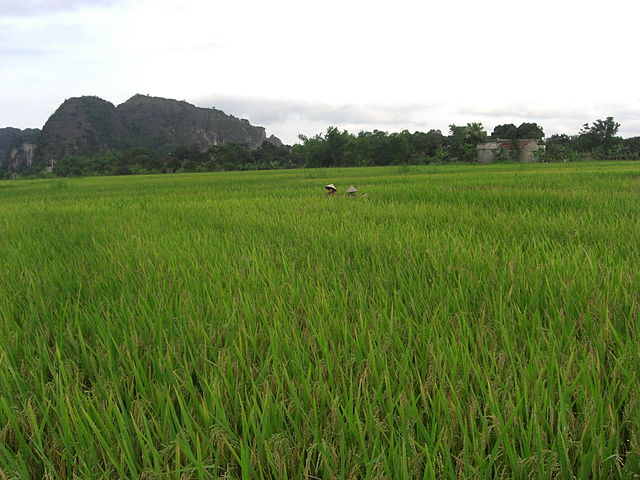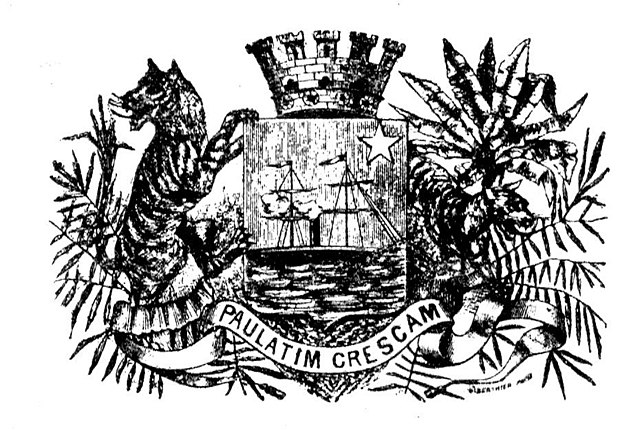I think that Goethe’s last words are more than suited to this rather obscure topic that I teased last time, tea in French Indochina. But perhaps I should start with some explanations for those unfamiliar with the history/geography of the world at the beginning of the 20th century.
French Indochina was the result of a process beginning in the middle of the 19th century with a series of military expeditions earmarked as punitive expeditions by France and Spain, leading to the occupation of the South of Vietnam and in 1887 to the creation of the Union of French Indochina.
Administrative map of French Indochina in 1937. Showing protectorates and provinces/districts by XrysD
Because of the distances involved and France not being overpopulated, this colony was seen as an economic one and not as a settlement one, meaning that “few” French went there and that the exploitation of natural resources was the priority (with most of the funding coming from taxes on the local people through monopoly on important products). For example, rice was the biggest exported product of French Indochina (both in volume and value), something that was unheard before (mostly because the former government and local people had no use for this kind of sales of goods but this is another topic, one that would lead us too far away from tea).
During the Roaring Twenties, France intended to diversify the French Indochina economy with the introduction of several new commodities to be produced but the Great Depression hurt it like in most colonies as the decline in prices and in exports meant less resources while the cost remained the same.
Rive Field by Halong Bay by Dinkum
But let’s not get too quickly to the end of the story.
As I said earlier, while looking for information on this topic, I found several old books and among them the Bulletin of the Economic Agency of Indochina, the representatives in France of the Governors-Generals of French Indochina acting also as a centre of information on said region, of promotion or of research on different topics. I accessed the Bulletins from 1928 to 1937 (I don’t know if it was published before (I have some doubts as it displays a 1st year mark followed by “new series”) or after) looking for information on tea as it was quite often filled with articles on politics, on agriculture in the different provinces as well as analysis of the economical situation in the area or in the potential markets around it (like the Dutch East Indies known today as Indonesia) or a little further away (Poland). Obviously, the different Bulletins are written in a style and with ideas that are so 20s-30s but they are quite interesting.
From 1928 to 1933, it was edited every month and from 1934 on, it became quarterly, making it 76 issues of it In 43 of them, I found at least one article on tea, ranging from production statistics to full analysis of the tea sector in French Indochina or to news about foreign markets (including India and Ceylon).
Banknote from the Bank of Indochina
Before I get into more details about the bigger picture, here are some interesting/puzzling facts:
– tea at that time was still painted/flavoured by chemical products, be it in China or in French Indochina. Perhaps it was also done in other places?
– there seems to be some forgery of what is tea with the addition of other plants and herbs (with those guilty being obviously according to the Bulletin the foreign intermediaries) . The solution was to work on a kind of label (“Appellation d’Origine” in French), an idea that is still valid today.
– there were two kinds of producers: the natives (small gardens) and the French ones with bigger gardens with different processing methods.
First thing, if you read For all the tea in China: Espionage, Empire And The Secret Formula For The World’s Favourite Drink by Sarah Rose (I look at a specific aspect of it, here), you might remember that there were experimental stations in most colonies to experiment and help with the spread of new plants and techniques.
French Indochina had some and they experimented with tea plans but for an unknown reason stopped doing so in 1910 before getting back to it from 1922 on. Their work focused on the best species to be used (although this statement written in 1933 is in contradiction with something else written two years ago in the Bulletin, see a little further below) and they had 14 varieties under supervision in 1919, 24 in 1923 and 70 in 1933 but also on the best way to “design” a garden (with shadow, without, with other trees, the use of fertilizers…) or the way to process tea leaves.
For example, the plots shadowed by chine wood oil trees gave 932 kg of fresh leaves per hectare when shadowed and 1,306 when not; with copperpods, the results were respectively of 807 and 1,087. Without any further indication about the differences between the plots, one can’t drawn any further conclusions.
The main areas of production seemed to have been in almost all French Indochina but mostly (and without surprise) in the areas with hills like those of Quang Nam (a name that came back as a good producing area over the whole time period).
However, in spite of what had been written about the experimental stations, two “species” of tea trees were used and seemed according to the authors native to French Indochina (but see above): Thea sinensis Sims and Thea assamica Mast.
The production was split in two with the gardens of the native, with few access to factories to process in an industrial way their leaves (they did it by hand) and a few French gardens, owned either by some settlers or some companies selling teas in France (perhaps a research for another post?), which had full access to one of the three factories I found references to (but there might have been more of them).
What about the productivity? In Annam from a tea tree, you could extract 600 to 800 grams of green leaves, of which 4 kilos were needed to produce 1 kg of saleable tea (made of 60% of the thin quality and 40% of big leaves or waste). At the same time, the production in Java or India was of 600 to 1,000 kg of saleable tea per ha. Since I have no clue about the density of the tea trees in the gardens in Annam, I can’t do the maths. If you have any information, I will edit this part.
In the end, what was the overall production of French Indochina? I am not sure we can say anything but here are some numbers I could find (which might be a bit biased and would need to be checked with other sources).
The crest of Saigon from 1870 to 1975
The tea produced by the natives seems sometimes to have been only for their own consumption but at other times, they are said to be selling it… The truth is probably that they drank some of it but that they also sold it to either the trading firms, the factories or the above mentioned intermediaries. However every year around 2,000 tonnes of tea were imported from China for the use of the native upper class, of the Chinese and of the European. This seems a bit much and my feeling is that part of it might have been just in transit to Europe under the label of Indochina tea (but this is just a gut feeling with no proof to back it).
However, since my sources here were in a way official, I got the numbers of tons exported (at 80% to France) each year over most of the period. I hope you are well seated because the figures are a bit like a roller-coaster with no real explanations for now.
| Year | Tons exported | Year | Tons exported | |
| 1902 | 163 | 1916 | 918 | |
| 1903 | 168 | 1917 | 862 | |
| 1904 | 327 | 1918 | 1,039 | |
| 1905 | 224 | 1919 | 903 | |
| 1906 | 328 | 1920 | 357 | |
| 1907 | 368 | 1921 | 156 | |
| 1908 | 306 | 1922 | 508 | |
| 1909 | 325 | 1923 | 878 | |
| 1910 | 530 | 1924 | 756 | |
| 1911 | 559 | 1925 | 103 | |
| 1912 | 436 | 1926 | 1,148 | |
| 1913 | 372 | 1927 | 776 | |
| 1914 | 490 | 1928 | 937 | |
| 1915 | 963 | 1929 | 1,012 |
Tons of tea exported from French Indochina (in tons per year)
I also got the value in French Francs for the second half of this table but since it wasn’t complete, I didn’t use it here.
After this “short” introduction, I will try to go through other documents I found online to see if I find more information to share with you or to see if I can find more about the names and whereabouts of the tea companies involved in this business and this area. But this will be for a later article.




Recent Comments